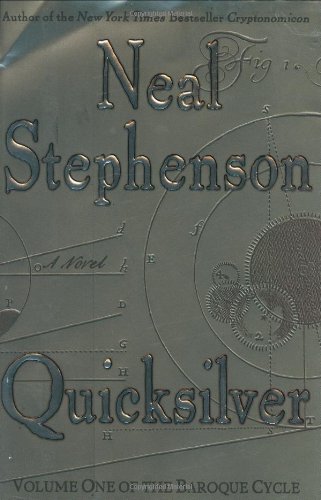Quicksilver
Quicksilver is the first novel in what the author describes as the Baroque Cycle. This lengthy narrative explores “the bold, curving forms, elaborate ornamentation, and overall balance of disparate parts” defined in this historical cycle that has so affected worldwide culture to this day. Daniel Waterhouse, a brilliant scientist; Jack Shaftoe, an intrepid adventurer; and Eliza, a creative and intelligent free spirit, travel through America, England, and Europe in the seventeenth and early eighteenth centuries. They are both observers and fully engaged participants in the explosive scientific and historic events rapidly changing the way humanity lives and defines its normal world. Cruelty, death, manipulation, sensuality, artistic sensitivity, and scientific passion fill England’s bloody Civil War and Plague; America’s emerging political, religious, and social identity; France’s glitter, decadence, and political intrigues through the reign of King Louis XIV; and other memorable and mundane places and events.
This literary tome definitely isn’t for the light-hearted, as the author plunges the reader into the moment-by-moment world of the scientific geniuses of that day: Newton, Leibniz, Spinoza, and the political shapers of European destiny such as Samuel Pepys and Benjamin Franklin. For fans of minute details, this is a panoramic feast probably rarely found in fiction form, a fascinating window into the minds of creative exploration and experimentation. Alchemy is rejected for the world of empirical science, characterized by its revolutionary theories alternatively rejected and validated, first slowly and then at what seems a frantic pace. The Royal Society begins to alter itself and the European Continent. Neal Stephenson’s impressive and accurate knowledge of science and history may be daunting to some, but invigorating to those truly seeking to understand and appreciate an in-depth journey through this truly “quicksilver” world with its fragile, unpredictable, but defining and fascinating era.










